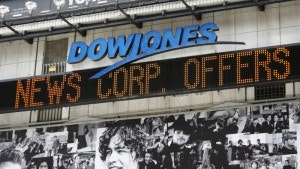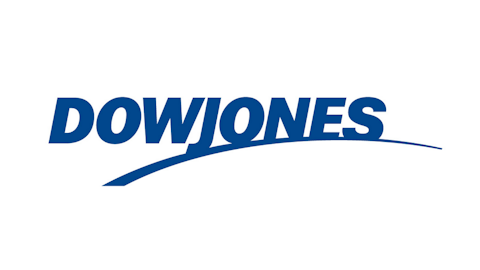It’s 15,000 and beyond for the Dow Jones Industrial Average (INDEXDJX:.DJI) this year as stocks have surged. Unemployment has fallen, the economy has risen steadily higher, and it looks like we’re finally rising out of the shadow of the recession. If nothing else, investors have certainly capitalized with the markets’ run-up.

Yet stocks haven’t turned drastically expensive during this time. According to data compiled by the Financial Times, the Dow Jones Industrial Average (INDEXDJX:.DJI)’s P/E average remains at a manageable 15 even with its 14.3% rise this year. American stocks as a whole are a bit pricier, with an average P/E ratio of 17.9 according to the FT‘s data, but how do stocks here in the U.S compare with their international rivals?
Are U.S. stocks too expensive?
Surprisingly, you don’t have to look to a certain type of economy — whether growing or struggling — to find similar valuations as the average American stock. Japan’s stocks average a P/E ratio of 17.6, even as the country’s NIKKEI 225 (INDEXNIKKEI:NI225) index has topped all competition this year by rising a whopping 31.7%. Easy money from Japan’s massive stimulus program, brought about as new prime minister Shinzo Abe tries to reverse more than two decades of stagnation, have helped push the country’s top firms ahead — particularly banks and other financial institutions.
Japan’s average stock valuation compares with Dow Jones Industrial Average (INDEXDJX:.DJI) member The Boeing Company (NYSE:BA) , which also boasts a P/E of 17.6 after running up more than 24% this year, one of the Dow Jones Industrial Average (INDEXDJX:.DJI)’s top gainers. Boeing’s a fit match for the P/E after a successful but mixed recent past marred by the 787 grounding drama, even as the company topped earnings expectations this past quarter. Similarly, Japan faces both rewards and challenges from its new, stimulus-paved road. While the easy-money climate has sparked a surge in Japanese financial stocks such as Nomura Holdings, Inc. (ADR) (NYSE:NMR) — a company where revenues jumped 30% on the back of stimulus — questions linger about how Japan will service its debt, which has grown to more than 200% of GDP, as well as combat the potential of reduced bank lending as a result of low interest rates.
Surprisingly, Japan’s P/E valuation of 17.6 is matched by one of the world’s most beleaguered economies — Spain. Spanish stocks average a similar valuation despite the country’s ongoing debt crisis. The IBEX 35 stock index reports an even cheaper average valuation of only 15.7, but that’s still more expensive than many national averages for equities. As a comparison, Germany’s stocks average a P/E of just 11.9, while Dutch stocks average a 13.1 valuation.
Spain’s still mired in its crisis as unemployment surges, recently topping 27% for 2013’s first quarter, with little hope of a major turnaround in sight. Still, some Spanish stocks have managed to push higher in 2013. While it hasn’t matched the likes of the Dow Jones Industrial Average (INDEXDJX:.DJI)’s rise, Spanish financial firm Banco Santander, S.A. (ADR) (NYSE:SAN) has seen shares rise more than 3.5% in 2013. The company’s dealing with a recent CEO change, but between its high dividend that yields nearly 11% and its smart expansion into Latin American nations in order to mitigate European exposure, Santander’s one of the best-positioned Spanish stocks for investors willing to take a gamble on picks in one of Europe’s most beaten-down economies.
If you’re looking for a country too cheap to ignore, however, it’s impossible to overlook China. The Chinese economy has been stuck in neutral — by its standards — recently, posting just 7.7% GDP growth in 2013’s first quarter after realizing double-digit growth as recently as 2010. Chinese stocks average a P/E of just 8, according to the Financial Times, cheap enough to make them the least-expensive stock on the Dow Jones Industrial Average (INDEXDJX:.DJI). Only JPMorgan Chase & Co. (NYSE:JPM), with its P/E of 8.5, comes close, and the major bank has struggled with regulatory scrutiny recently that has inspired caution, not optimism, in this top financial pick — despite topping earnings expectations in its most recent quarter.
Investing in China represents far more of a risk than the likes of JPMorgan Chase & Co. (NYSE:JPM), despite whatever hurdles regulators can throw at the big bank. Despite strong growth in past years that has propelled China’s economy to the second-largest in the world, the bubbling housing market, rising middle class, and poor infrastructure climate will challenge the nation in the coming years. If investing in China’s growth story tempts your hand, it’s better to find a buy among the strongest global companies betting on the leading emerging market’s growth. Industrial giant Caterpillar Inc. (NYSE:CAT) has hitched much of its future on China, and while slow sales have hit Caterpillar Inc. (NYSE:CAT) hard lately, this is one stock that’s poised to capitalize in a significant way of Chinese economic growth picks up in the future. At a cheap P/E, Caterpillar — which sits atop the cyclical industrial industry — is a safe pick to invest indirectly in China.
The article Is Investing in America Right for the Global Investor? originally appeared on Fool.com and is written by Dan Carroll.
Fool contributor Dan Carroll has no position in any stocks mentioned. The Motley Fool owns shares of JPMorgan Chase.
Copyright © 1995 – 2013 The Motley Fool, LLC. All rights reserved. The Motley Fool has a disclosure policy.

